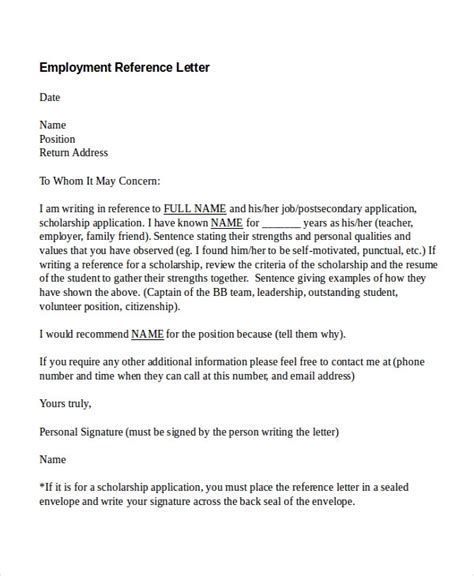Employment Reference Template: A Comprehensive Guide

Providing an employment reference can be a daunting task for many employers. It requires a careful balance between providing an honest and accurate assessment of the employee’s skills and abilities while avoiding any potential legal issues. In this guide, we will walk you through the process of creating a comprehensive employment reference template that will help you provide valuable feedback to potential employers while protecting your company from any legal liabilities.
Understanding the Purpose of an Employment Reference
Before we dive into the specifics of creating an employment reference template, it’s important to understand the purpose of the reference. An employment reference is a document that provides an assessment of a former employee’s work performance, skills, and abilities. The purpose of this document is to help potential employers make informed decisions about whether or not to hire the individual based on their past work experience and qualifications.
Types of Employment References
There are two main types of employment references:
- Written references
- Verbal references
A written reference is a formal document that is typically provided on company letterhead and signed by the employer. It provides a detailed assessment of the employee’s work performance, skills, and abilities. A verbal reference, on the other hand, is a conversation between the potential employer and the former employer.
Legal Considerations
When providing an employment reference, it’s important to be aware of any legal considerations that may apply. In some cases, providing a negative reference could result in legal action being taken against the employer. Therefore, it’s important to ensure that any information provided is accurate, honest, and relevant to the job being applied for.
Creating an Employment Reference Template
Introduction
The introduction of your employment reference template should include basic information about the employee, such as their name, job title, and dates of employment. This section should also include a brief overview of the employee’s job duties and responsibilities.
Performance Assessment
The performance assessment section should provide an honest and accurate assessment of the employee’s work performance. This section should include specific examples of the employee’s strengths and weaknesses, as well as any areas where improvement is needed. It’s important to avoid making any discriminatory comments or providing any information that could be considered defamatory.
Strengths
In this section, you should highlight the employee’s strengths and accomplishments. This can include specific projects they worked on, awards they received, or any other notable achievements.
Weaknesses
In this section, you should address any areas where the employee could improve. It’s important to provide constructive feedback and offer suggestions for improvement.
Skills and Abilities
The skills and abilities section should provide an assessment of the employee’s technical skills and abilities. This can include specific software programs they are proficient in, any certifications they hold, or any other relevant skills.
Work Habits
The work habits section should provide an assessment of the employee’s work ethic and behavior. This can include their punctuality, ability to work independently, and their ability to work as part of a team.
Conclusion
The conclusion of your employment reference template should summarize the employee’s overall performance and provide a recommendation for potential employers. It’s important to avoid making any promises or guarantees about the employee’s future performance.
Frequently Asked Questions
What information should be included in an employment reference?
An employment reference should include basic information about the employee, such as their name, job title, and dates of employment. It should also provide an assessment of their work performance, skills, and abilities, as well as their work habits.
Can an employer provide a negative reference?
Yes, an employer can provide a negative reference as long as the information provided is accurate and relevant to the job being applied for. However, employers should be aware of any potential legal implications and should avoid making any discriminatory comments or providing any information that could be considered defamatory.
Can an employee see their employment reference?
Generally, employees do not have the right to see their employment reference. However, some employers may choose to provide a copy of the reference to the employee upon request.
How should an employer respond to a reference request?
Employers should respond to reference requests in a timely and professional manner. It’s important to provide an honest and accurate assessment of the employee’s work performance, skills, and abilities while avoiding any potential legal issues.
By following the guidelines outlined in this guide, you can create an employment reference template that provides valuable feedback to potential employers while protecting your company from any legal liabilities. Remember to be honest, accurate, and professional in your assessment of the employee’s work performance, skills, and abilities.
